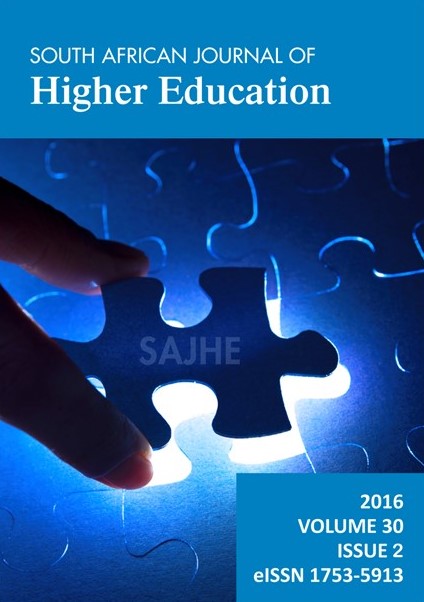Applying predictive analytics in identifying students at risk: A case study
DOI:
https://doi.org/10.20853/30-2-583Abstract
In this paper, a case study is presented of an institutional modelling project whereby the most appropriate learning algorithm for the prediction of students dropping out before or in the second year of study was identified and deployed. This second-year dropout model was applied at programme level using pre-university information and first semester data derived from the Higher Education Data Analyzer (HEDA) management information reporting and decision support environment at the Cape Peninsula University of Technology. An open source platform, namely Konstanz Information Miner (KNIME), was used to perform the predictive modelling. The results from the model were used in HEDA automatically to recognize students with a high probability of dropping out by the second year of study. Being able to identify such students will enable universities, and in particular programme owners, to implement targeted intervention strategies to assist the students at risk and improve success rates.Downloads
Downloads
Additional Files
Published
How to Cite
Issue
Section
License
This journal is an open access journal, and the authors and journal should be properly acknowledged, when works are cited.
Authors, copyright holders, may use the publishers version for teaching purposes, in books, theses, dissertations, conferences and conference papers.
A copy of the authors' publishers version may also be hosted on the following websites:
- Non-commercial personal homepage or blog.
- Institutional webpage.
- Authors Institutional Repository.
The following notice should accompany such a posting on the website: This is an electronic version of an article published in SAJHE, Volume XXX, number XXX, pages XXX “XXX", DOI. Authors should also supply a hyperlink to the original paper or indicate where the original paper (http://www.journals.ac.za/index.php/SAJHE) may be found.
Authors publishers version, affiliated with the Stellenbosch University will be automatically deposited in the University Institutional Repository SUNScholar.
Articles as a whole, may not be re-published with another journal.
The following license applies:
Attribution CC BY-NC-ND 4.0





